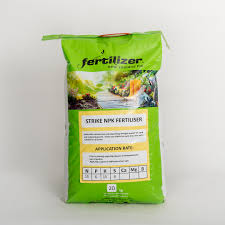
Dez . 13, 2024 22:36 Back to list
fertilizer urea 46 0 0 manufacturer
Understanding Urea Fertilizer A Comprehensive Guide to 46-0-0
Urea fertilizer, with a chemical formula of CO(NH2)2, is one of the most widely used nitrogenous fertilizers across the globe. Its high nitrogen content, specifically the 46-0-0 formulation, indicates that it contains 46% nitrogen (N), with no phosphorus (P) or potassium (K). This article delves into the characteristics, benefits, applications, and production of urea fertilizer, particularly focusing on the 46-0-0 formulation and its manufacturing processes.
Characteristics of Urea Fertilizer
Urea is a white, crystalline solid that is highly soluble in water, making it easy to apply. Due to its unique properties, it is highly favored in agricultural practices. The high nitrogen content in urea is crucial for plant growth, as nitrogen is an essential macronutrient that plays a vital role in protein synthesis and chlorophyll formation, which are important for plant development and photosynthesis.
The 46-0-0 formulation indicates that urea is purely a nitrogen fertilizer. The absence of phosphorus and potassium makes it particularly valuable in situations where soil initially has adequate levels of these nutrients, but nitrogen is deficient. This characteristic allows farmers and agricultural specialists to tailor fertilizer application based on specific crop needs, improving overall yield and productivity.
Benefits of Urea Fertilizer
1. Cost-Effectiveness Urea is often more affordable than other nitrogenous fertilizers, particularly due to its high nitrogen content. With a concentrated formulation, farmers can achieve desired nutrient levels without needing to apply excessive quantities.
2. Versatility Urea can be used for a wide range of crops, including cereals, vegetables, and fruits. Its solubility in water makes it suitable for various application methods, including broadcasting, side-dressing, and fertigation (injecting fertilizers into irrigation systems).
3. Enhanced Nitrogen Efficiency The nitrogen in urea is available to plants rapidly due to its solubility. Additionally, with proper soil management practices, such as incorporating urea into the soil or using inhibitors, nitrogen loss through volatilization can be minimized.
4. Environmental Impact When used judiciously and in the right conditions, urea can be part of sustainable agricultural practices. It can contribute to improved soil nitrogen levels without excessive runoff, particularly when applied at the right rate and time.
fertilizer urea 46 0 0 manufacturer

Application Techniques
Urea can be applied in several ways, depending on the crop requirements and environmental conditions
- Broadcasting This method involves spreading urea evenly over the soil surface before or during planting. It is essential to incorporate the urea into the soil to reduce nitrogen loss through volatilization. - Side-Dressing Applying urea alongside growing crops maximizes nitrogen availability when plants require it most. This technique is beneficial for nitrogen-sensitive crops. - Fertigation Through irrigation systems, urea can be dissolved in water and delivered directly to the root zone of plants, ensuring immediate uptake. This method is highly efficient in modern farming systems.
Manufacturing Process
The production of urea typically involves the reaction of ammonia (NH3) with carbon dioxide (CO2) under high pressure and temperature to form ammonium carbamate, which is then dehydrated to produce urea and water. The overall reaction can be summarized as follows
\[ 2NH3 + CO2 \rightarrow (NH2)2CO + H2O \]
The manufacturing process can take place in two primary phases synthesis and granulation. During synthesis, ammonia and carbon dioxide react in a high-pressure reactor. The resulting urea solution is then concentrated in a series of evaporators, and finally, the urea is granulated to produce solid urea granules suitable for agricultural use.
Conclusion
Urea fertilizer, particularly the 46-0-0 formulation, plays a pivotal role in modern agriculture by supplying essential nitrogen to crops. Understanding its properties, benefits, and application techniques allows farmers to make informed decisions that enhance crop yield and promote sustainable farming practices. As agriculture continues to evolve with advancements in technology and environmental awareness, urea will remain a cornerstone of nutrient management strategies, ensuring food security for a growing global population.
-
10-10-10 Organic Fertilizer - Balanced NPK Formula
NewsAug.02,2025
-
Premium Organic Manure Compost for Eco Gardens
NewsAug.01,2025
-
Organic 10-10-10 Fertilizer | Balanced Plant Nutrients
NewsJul.31,2025
-
Premium Amino Acid Fertilizer | Rapid Plant Growth Booster
NewsJul.31,2025
-
10 10 10 Fertilizer Organic—Balanced NPK for All Plants
NewsJul.30,2025
-
Premium 10 10 10 Fertilizer Organic for Balanced Plant Growth
NewsJul.29,2025
